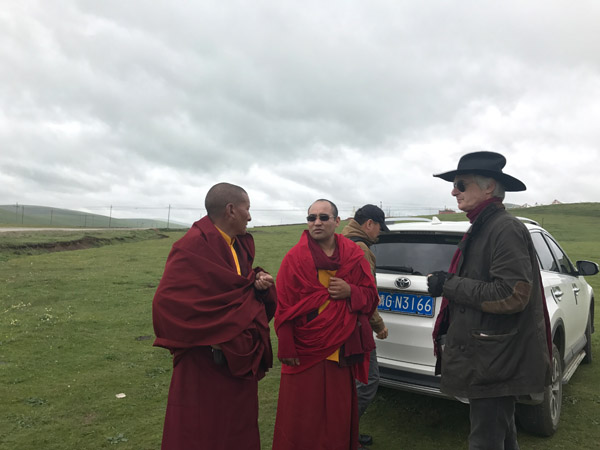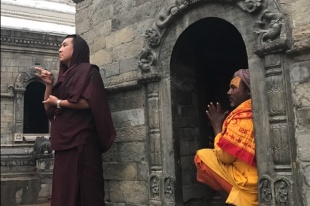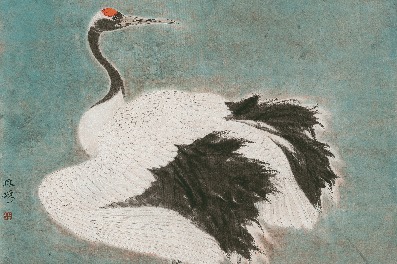Searching for the Lotus-Born Master (Ⅱ)

Editor's note: Laurence Brahm first came to China as a university exchange student from the US in 1981 and has spent much of the past three and a half decades living and working in China. He is a lawyer, an economist and founding chairman of the Himalayan Consensus. He is also an award-winning documentary film director specializing in extreme Himalayan expeditions. His latest film Searching for the Lotus-Born Master (2018) has received a dozen international film festival awards and accolades.
Starting Nov 14, China Daily is publishing behind-the-scenes stories about the documentary every Wednesday, with nine episodes total. Please stay tuned and join this incredible journey.

The first manifestation we sought to understand is: The Lotus King "Pema Gyalpo". He is a magnetizing force, surrounded by Dakinis, or feminine energy forces. He is depicted as the king of Oddiyana, the ancient Buddhist kingdom on the Silk Road. Some scholars say that Oddiyana is the prototype for the mystical realm of Shambhala or Shangrila. There are copious records of the Oddiyana kingdom in the Tang dynasty annals. The kingdom was in a unique location in the Swat Valley of what is today, Pakistan. Because it was such an important stop on the Silk Road, there was a confluence of ideas coming together in Oddiyana, from Hindu, Buddhist, Taoist and Shaman, that became of the essence of Tantric.
我们试图探讨的第一个化身是:莲花王"贝玛嘉波"。他是一种磁化力,被空行母众(一种女性神祇)环绕。他被描述为丝绸之路上古老佛教王国乌仗那的国王。一些学者认为乌仗那国是秘境香巴拉(即香格里拉)的原型。在唐代史册中有大量关于乌仗那国的记载。乌仗那国位于一个独特的位置,在现今巴基斯坦的斯瓦特河谷。乌仗那国是丝绸之路上的重要一站,它融合了印度教、佛教、道教与萨满教等不同的教义,汇聚了密宗的精髓。
In searching for the Lotus-Born Master, one expedition team went to Swat Valley in search of Oddiyana. The expedition was led by Professor Li Xiguang of Tsinghua University, and they found the actual ruins of the lost kingdom of Oddiyana. They were able to found this by following the records from Tang dynasty monk, Xuanzang. There were many records of the Tang dynasty describing Oddiyana as a kingdom of Tantric Buddhism with over 1,400 temples along the Swat river.
在寻找莲花生大士的过程中,我们的一支探险队前往斯瓦特河谷寻找乌仗那国。该探险队由清华大学李希光教授带队,他们根据唐朝玄奘法师的记载,找到了失落的乌仗那国遗址。在唐朝诸多记载中都将乌仗那国描写为一个密宗佛教的王国,沿着斯瓦特河畔建立了1400多所寺庙。





































